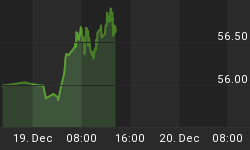The Federal Reserve reported today that industrial production (IP) in September increased by only 0.1% after being flat in August. The 3.9% annualized growth in Q3 IP (versus 3.6% in Q2) was "front-loaded" with the 0.6% month-to-month increase in July. Capacity utilization (CAPU) was unchanged in September from August at 82.1%. In this cycle, the peak CAPU occurred in July and August 2006 at 82.1%. The average CAPU over the 1972 through 2006 period was 81.0%. As Chart 1 shows, the peak CAPU in this cycle was the lowest cyclical peak in the 1967 through 2007 period. There may be other reasons why corporations would want to embark on increased capital spending programs now, but constrained capacity is not one of them.
Chart 1
To rewind the tape to last Friday, consumer retail spending also ended the third quarter with a whimper. Unit motor vehicle sales were down 0.3% in September versus August. Nominal retail sales excluding motor vehicles, gasoline and food, the latter two affected a lot by price changes month-to-month, were up only 0.1% in September versus down 0.2% in August. This "core" concept of retail sales increased at an annual rate of 4.8% in the third quarter largely because of the month-to-month increase of 0.8% in July. So, much like IP growth, third-quarter core retail sales growth was "front-loaded" in July.
As for housing demand, that just continues to whimper. Today the National Association of Home Builders reported their index of housing demand conditions sank to its lowest level in the history of the series (see Chart 2). The overall index slipped to a reading of 18 in October (probably refers more to conditions in September) from 20 in September. To put an exclamation point on Home Builders report, the CEO of Caterpillar said the current downturn in the housing market was the worst since World War II and was likely to weaken further next year.
Chart 2
Although I still am leaning toward a no-change fed funds rate decision from the FOMC on October 31, the lack of momentum that the economy has going into the fourth quarter, the weak profit growth being reported for the third quarter and the skepticism being shown in the financial markets for the effectiveness of the M-LEC make it a close call.















